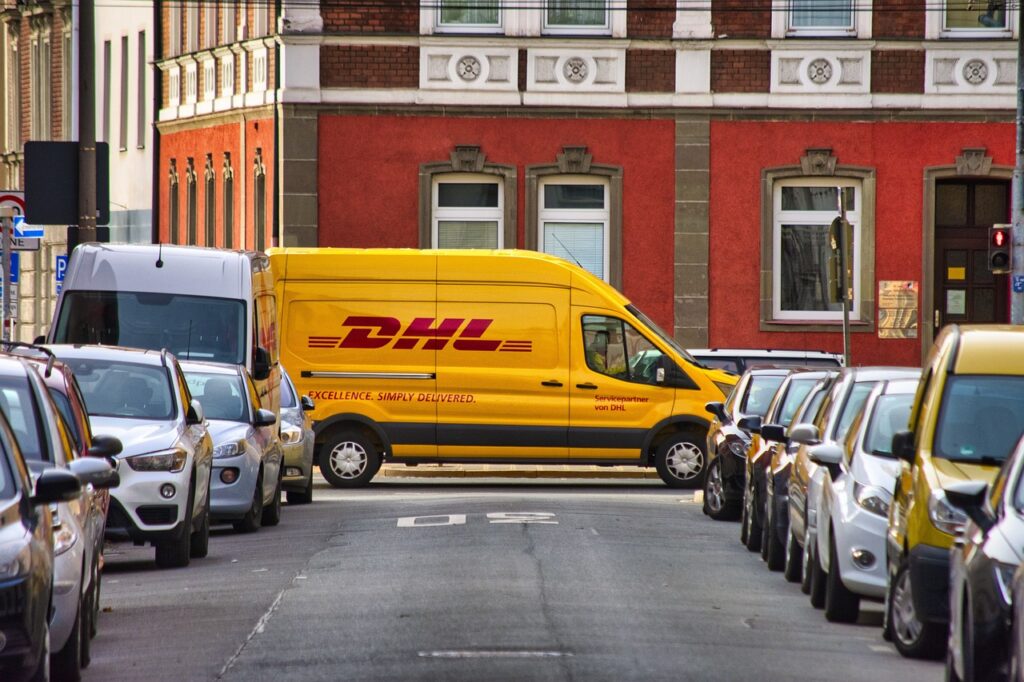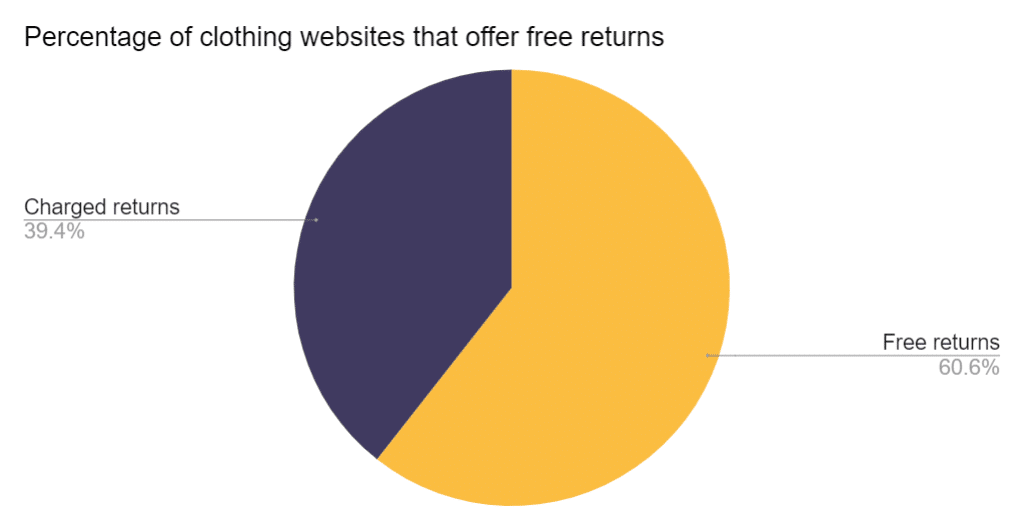WMS provider Orderflow has found that almost 2 in 5 online clothing stores now charge for returns. With busy periods like Christmas leading to an increase in clothing item returns, (Royal Mail predicted a 52% jump back in January 2024), Orderflow analysed how many clothing store returns charge for returns, and which ones offer for free.
Data by Business Leader shows that 78% of customers are more likely to buy online if the company offers free returns, with stores like Amazon and ASOS being the most researched for free return policy.
However, up until Orderflow’s research, there is yet to be a database that shows all the most popular e-commerce businesses in the UK and if they charge for free returns.
Orderflows comments on the research
Orderflow compares the ‘cooling off’ period and the number of the top 100 fashion e-commerce brands that offer free online returns vs those that charge. They looked at the top 100 sites within Google to get a strong perspective on the top brands in the industry.
The data shows that 39.4% charged for returns, whereas 60.6% offered free returns. This is a positive result, showing that the majority of online e-commerce brands like to respect their customers and not have them spend further money on returning an item. However, in the near 40% of brands that do charge for returns, some of the most well known brands are included in the price.
The returns cooling off period
As well as finding out the amount of e-commerce stores that are searching for free returns, Orderflow looked at the length of the returns period. The data shows that the return period varies from store to store with 28 days being the most common, 100 days being the longest return period and some only offering the statutory 14 days required by Consumer Contracts regulation, which comes out as the shortest returns period.
Companies who offer the 28 cooling off period include ASOS, New Look, Next and Very.
Companies who offer the 14 days statutory return include Pink Boutique, Fat Face, Hurleys and In the style.
The data also finds different stores have their own terms and conditions, with some only offering free returns to their members, and others only offering in person returns. Others only offer free returns if the item received by the consumer is faulty or damaged, or if the returns are located in the UK only.
Examples of those who only offer free returns for their members include H&M. As well as bringing more money into their business, this is also an incentive to bring more customers to their members area.
Why may well known brands want to charge for returns?
As you can see, the fashion e-commerce market includes a large variety of brands that make the most of charging customers for returns. But can you blame them? When you look at the most returned online purchases by category, Statistica found during the year 2023 ‘clothing’ comes out on top with 27% of the share, beating the likes of shoes at 15% and bags at 14%.
This could be a reason as to why some brands charge for returns, to maximise on the amount of profit a business can make. This does make sense since the clothing industry is guaranteed to expect returns on items that don’t fit or they do not suit the individual any more. Brands that are in a financially strong position (like ASOS and New Look) may feel they are able to offer free returns because they will not experience a loss.
Whilst free returns are a big bonus for customers, having a better system for processing free and paid returns is also crucial. Having helpdesk software that is synced up with your latest policy on free returns will be essential to keeping customers happy.
There could also be an argument that suggests some brands are forced to charge for returns, like House and Fraser and Marks and Spencers. Stores like these examples don’t just sell items online, they own physical stores up and down the country. Therefore, they are more likely to have higher costs over stores that are fully e-commerce, like ASOS and Pretty Little Thing. This could be a reason. Customers could potentially return the products for free instead, at one of their stores.
How free returns impact consumer behaviour
With a database like Orderflow’s now available to the public to view, it would be good to take a look at how free returns can have an impact on consumer behaviour. Data from Google Trends and Glimpse shows searches for the term ‘free returns’ have been up 66% over the previous 5 years, indicating the UK public are more interested in the flexibility of free returns.
- Increased Purchase Confidence: Knowing that they can return a product for free if it doesn’t meet their expectations or if they change their mind can help consumers know if they take the risk. It may also help customers take the plunge and try potential new products.
- Higher Conversion Rates: Offering free returns can lead to higher conversion rates as it reduces the perceived risk associated with making a purchase. Customers are more likely to complete a purchase if they know they can easily return the product if necessary. Another way that you can help to manage and work on your conversion rates is through using the right marketing software.
- Reduced Purchase Anxiety: Some consumers may experience anxiety or hesitation when making a purchase, particularly for items they haven’t seen or tried in person. This is super common when it comes to online stores. Free returns however can alleviate this anxiety, making customers more comfortable with their purchasing decision.
- Enhanced Customer Loyalty: Offering hassle-free returns can contribute to building customer loyalty. When customers have a positive experience with returns, they are more likely to repeat purchases from the same retailer in the future, reducing the risk of return related issues.
- Reduced Product Returns: Interestingly, offering free returns may actually reduce the overall number of returns. This is because customers may feel less need to return items if they know they have the option but are less likely to exercise it. As a result, this reduces strain on the delivery services which will be strained during busy shopping periods such as Christmas and Easter.
How can software help companies with returns?
Making a decision on whether to offer free returns or not can have a knock on software impact, so having an understanding of what different platforms provide through tools like Comparecamp’s CMS (Customer Management Softwares) comparison content will help.
Conclusion
Overall Orderflow’s research is a clear example that shows the importance of comparing data. Targeting fashion brands show how an industry can have a variety of terms and conditions, and comparing them can help customers compare and make the most appropriate decisions.


